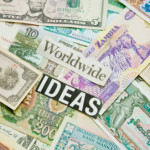 The Middle East has often been ignored by exchange traded fund issuers of the world though the region gained in economic prominence with the surfacing of the so-called Frontier Markets.
The Middle East has often been ignored by exchange traded fund issuers of the world though the region gained in economic prominence with the surfacing of the so-called Frontier Markets.
Among the frontier markets, Qatar and United Arab Emirates have been outperforming, and the international investor community was quick to recognize their emergence. Also, Qatar’s winning the hosting rights of the soccer World Cup in 2022 underscores the region’s growing importance beyond just oil and gas.
Before Qatar and the UAE officially get promoted to emerging markets from frontier markets by Morgan Stanley on May 30, iShares, the world’s largest issuer of ETFs and an arm of BlackRock, launched two funds focused on the two fast-growing Middle East equity markets. The iShares MSCI Qatar Capped ETF (QAT) and the iShares MSCI UAE Capped ETF (UAE) were launched weeks before the promotion of these two OPEC members to EM category.
BlackRock’s own research shows the Middle East clocked one of the strongest growths in the world since the 2008 financial crisis with Qatar particularly blazing the trail. Its gross domestic product grew nearly 67 percent between 2008 and 2013, which is again forecast to double between 2014 and 2025 on account of World Cup infrastructure-related spending and greater oil exports, thanks to falling production costs.
Though UAE is unlikely to match Qatar’s growth pace, a report by the International Monetary Fund forecasts the Arab nation to grow by 4.4 percent this year and 4.2 percent next year. The same report forecasts 5.9 percent growth for Qatar this year and 7.1 percent next year. They are the first Middle East countries to be moved by MSCI from a frontier markets index to an emerging markets index.
It’s important to note, however, that both countries have little resemblance to the typical emerging-market countries due to their high per-capita income and significant oil wealth. They were elevated due to the expansion of their securities markets and potential for future growth that buck the traditional EM themes such as demographic growth and rising incomes.
Both the indexes are free-float adjusted market-capitalization weighted and ensure no single holding exceeds 25 percent of total weight. The UAE ETF tracks the MSCI All UAE Capped Index, a gauge consisting of companies domiciled or listed in the UAE and which get a majority of their revenue from there. The fund’s 26 holdings are heavily biased toward financial (70 percent of market cap) and industrial companies (20 percent) while energy and healthcare contribute 4 percent each.
The Qatar ETF, on the other hand, is more spread out across sectors. It tracks the MSCI All Qatar Capped Index and consists of 25 companies from financials (56 percent), telecom (14 percent), industrials (13 percent), energy (7 percent), materials and utilities (4 percent each) and consumer staples (1 percent).
Both the funds have an annual expense ratio of 0.61 percent.
Disclosure: No holdings
Contact Ulli